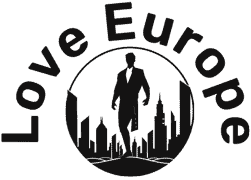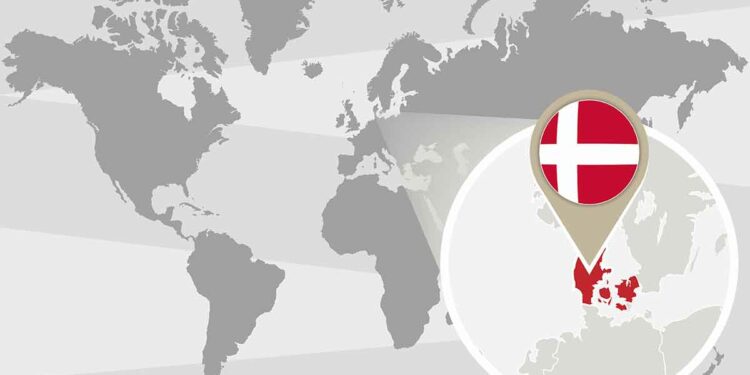Famous throughout history for their bravery and masterful maritime prowess, Vikings are synonymous with Scandinavia, and in Denmark, it’s no exception, with Dane Vikings present at the start of the Viking Age in 800 AD.
The Viking Age brought changes to the Scandinavian region, including its first kings, who ruled over an area more or less resembling that of modern-day Denmark during the peak of the Viking Age between 800 and 1050 AD.
Entangled in the history, culture and national identity of Denmark and its people, Vikings are responsible for giving Denmark its name and you can learn more about them at various Viking museums, villages and rune stones.
3- Hans Christian Andersen

Vikings may have placed the Kingdom of Denmark firmly on the map during the Middle Ages, however, it was Denmark’s celebrated writing community that earned the country international praise during the 19th and 20th centuries.
No name is more famous in Danish literature than that of Hans Christian Andersen, a celebrated 19th-century author who penned iconic plays, novels and fairy tales such as “The Little Mermaid”, “The Ugly Duckling” and “The Snow Queen”, all of which have been made into cult-classic fairytale films.
Born on the 2 April 1805, in the city of Odense, Andersen’s works have been translated into more than 125 languages.
His stories have touched the lives of millions of adults and children worldwide, making him without a doubt Denmark’s most prolific writer. Discover Hans Christian Anderson’s Denmark by downloading this self-guided tour with StoryHunt.
4- Copenhagen

The beautiful capital of Denmark, Copenhagen, is a world-class city with a perfect harmony of Scandinavian modernity, conventionality and a touch of royalty.
Founded in 1167 by Bishop Absalon and the capital of Denmark since the 1400s, Copenhagen lies on the islands of Amager and Zealand.
The city is best discovered on a walking tour with a local guide.
Its charming cobbled streets, picturesque waterfront areas, vibrant food scene and all-around “hygge” vibe attract visitors from around the world.
Among the top attractions in this fascinating Scandinavian capital are the historic Tivoli Gardens, the Frederiksstaden and Nyhavn districts, Rosenborg Castle and the Little Mermaid Statue.
This popular city is only 26 miles (42 km) from the Swedish city of Malmö and you can explore two cities in one day! Go all in and book your entry ticket with unlimited rides online now.
5- LEGO

Founded in the Danish town of Billund by Ole Kirk Christiansen in 1932, LEGO is a truly iconic Danish brand that is arguably the Kingdom of Denmark’s most famous export.
Renowned for their colourful interlocking bricks, detailed play sets and popular “LEGOLAND” theme parks, LEGO has come a long way since Christiansen first began making wooden toys in a small carpenter’s workshop and can be found in millions of homes across the world.
For LEGO lovers planning a trip to Denmark, be sure to check out LEGOLAND Billund and the 129,000 square-foot (12,000 m2) LEGO House for an epic LEGO adventure fit for all ages.
6- Danish ‘Hygge’

Though not exclusive to Denmark, the term ‘hygge’ is a popular Danish and Norwegian expression used to describe a cosy, soothing atmosphere or feeling, such as the warm glow of a fireplace or spending time with loved ones.
Hygge is all about comfort and being content, with the term becoming mainstream in Danish culture around the latter stages of the 20th century before becoming internationally associated with Denmark during the 21st century.
First appearing in Danish literature during the 1800s, the term and the philosophy behind it has become an ingrained part of everyday Danish living and the country’s national identity, with a touch of Danish hygge the perfect remedy for a restless soul.
7- The Oldest Flag In The World

Similar in design to the national flags of fellow Scandinavian neighbours Sweden and Norway, the Danish national flag, or the “Dannebrog” as it’s known in Danish, is a major symbol of Danish culture and is recognised as the oldest state flag in the world.
First adopted by Danes as their country’s official flag in 1625, the Dannebrog boasts a simple white cross design on a red background and, according to legend, was the source behind an unexpected Danish victory when it fell from the skies in a battle in what is today modern-day Estonia on 15 June 1219.
Now more than 800 years old, the Dannebrog can be spotted all across Denmark and prominently features at everything from birthday celebrations to funerals and even its own dedicated holiday.
Valdemar’s Day is when proud Danes remember the flag’s rich history and origin on 15 June every year.
8- The Little Mermaid

Penned by the late great Danish author Hans Christian Andersen in 1836, the beloved children’s fairy tale known around the world as “The Little Mermaid” is arguably one of Denmark’s most famous literary works.
The tale and author behind it are so popular in Denmark that they even spawned the creation of a bronze mermaid statue in central Copenhagen’s Langelinie promenade.
It has been one of Copenhagen’s most popular attractions ever since it was unveiled to the public more than a century ago in 1913.
Commissioned by Carl Jacobsen, son of Carlsberg founder J.C. Jacobsen, this small 4.1-foot-tall (1.25 m) statue was created by sculptor Edvard Eriksen.
It’s right up there with other world-famous statues such as Rio’s “Christ the Redeemer” and the Statue of Liberty in New York City and has taken its place in Danish pop-culture.
9- Smørrebrød

As traditionally Danish as it gets, Smørrebrød is Denmark’s tried and tested open-faced sandwich consisting of a slice of rye bread topped with anything from cured meats, pickled herring or smoked salmon to boiled eggs, horseradish or even crunchy potato chips.
Popular thanks to its versatility and straightforward preparation process, Smørrebrød is the go-to afternoon lunch option for Danes and can be found anywhere from school lunchboxes to the menus of trendy Copenhagen cafes.
Piled high with toppings and options to suit every diet, Smørrebrød is an authentic Scandinavian dish served throughout northern European countries such as Sweden and Norway that’s best enjoyed in Denmark, where it’s more popular than anywhere else.
10- Tivoli Gardens

Tivoli Gardens, or simply Tivoli for short, is one of Copenhagen’s major tourist attractions that’s been delighting visitors of all ages since first opening its doors in 1843.
Located in central Copenhagen, Tivoli Gardens is a mystical, themed amusement park that is one of the world’s oldest amusement parks still in operation.
The most-visited amusement park in all of Scandinavia and the second most-visited seasonal park in the world, the historic Tivoli Gardens can entertain visitors all day long with some 25 unique attractions, including four rollercoasters and two water rides.
11- Liquorice

Liquorice, or ‘lakrids’ as it’s known in Danish, is a strong and salty treat with an acquired taste that’s adored by Danes despite liquorice sharing a rather ‘love-hate’ relationship elsewhere in the world.
Added to everything from tea and biscuits to cake and sorbet ice cream in Denmark, liquorice is said to give a warm and comforting sensation when consumed during the cold Scandinavian winter months and is the main reason why Danes love it so much.
12- The Danish Royal Family

One of the oldest and most storied in the world, the Danish Royal Family has been sitting on the Kingdom of Denmark’s throne since the days of Harald the Bluetooth and Gorm the Old in 900 AD.
The Danish Royal Family enjoys widespread popularity among the Danish public and has ties to most major royal families in Europe, including the British monarchy.
With a legacy that spans more than 1,000 years on the Danish throne, the Danish Royal Family are the pride and joy of Denmark and have called Copenhagen’s Amalienborg Palace home since the 1790s. It’s worth joining a tour of the palace.
13- Carlsberg Beer

Danes love their pilsner beer, with no beer brand bigger or more popular in Denmark than Carlsberg, an authentic Danish beer that’s been brewed in Copenhagen since 1847.
Among the top 10 largest breweries in the world, Carlsberg was first exported to Scotland in 1868 and has since developed into a global beer brand producing more than 500 unique local and international beer varieties.
Headquartered in Copenhagen since its foundation, the company is one of the largest in Denmark and is the go-to pilsner for beer lovers seeking a crisp and refreshing beer when visiting Danish pubs or bars.
14- The Danish Hot Dog
Best described as your typical hot dog with a twist, Danish hot dogs are a street food classic in this happy Scandinavian nation and have been prepared and peddled from Copenhagen ‘Pølsevogne’ (sausage stands) since the early 1900s.
The Danish hot dog can incorporate a typical American-style sausage or a Danish ‘rød pølse’ sausage that’s traditionally grilled before being placed on a hot dog bun and topped with a generous serving of curried remoulade sauce, fried onion and pickles.
Very much a feast for the taste buds, Danish hot dogs incorporate ingredients and flavours commonly found across Denmark into one of the world’s most widely enjoyed street food staples to create a uniquely Danish delicacy that goes perfectly with a cold Carlsberg pilsner.
A great way to taste hotdogs is on a bike tour in Copenhagen.
15- Islands

Denmark is a country spread out across a series of islands big and small, with the Scandinavian nation made up of more than 1,400 islands, most of which are uninhabited.
Dotted between the Jutland Peninsula and the southwest of Sweden, Denmark’s vast island archipelago separates the Baltic from the North Sea and boasts a large and intricate road network for seamless travel between Scandinavia and Central Europe.
Denmark’s islands play a crucial role in the nation’s economy and culture, with the cities of Odense on Funen and Copenhagen on Zealand and Amager both located on islands off the Jutland Peninsula.
You may also be interested in:
Source link : https://travel2next.com/what-is-denmark-known-famous-for/
Author :
Publish date : 2024-04-21 07:00:00
Copyright for syndicated content belongs to the linked Source.








